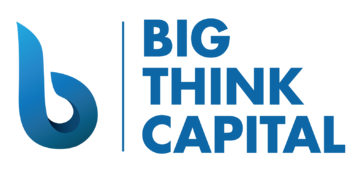
This article serves as a comprehensive guide for entrepreneurs and small business owners keenly interested in understanding, managing, and navigating the rate and repayment aspects of Small Business Administration (SBA) loans. By providing a thorough overview of SBA loans, looking at various types, and delving into the purpose of these loans, we aim to give our readers a solid foundation. With this groundwork, we then proceed to evaluate SBA loan rates, their influencing factors, how to control, and resources to use for current rates evaluation. Finally, we’ll take a closer look at SBA loan repayment, its structures, strategies to manage this repayment, and conditions to consider a refinance or restructuring of the loans.
Understanding SBA Loans
Overview of SBA Loans
The Small Business Administration (SBA) offers various loan programs to help small businesses obtain financing. SBA loans are provided by approved lenders and guaranteed by the SBA, which reduces the lender’s risk. The most popular SBA loans are the 7(a) and 504 loan programs.
7(a) loans can be used for working capital, equipment, furniture, fixtures, inventory, business acquisitions, and more. Loan amounts range from $500 to $5 million, with interest rates based on the prime rate.
504 loans are for major fixed assets like real estate or equipment. Loan amounts range from $25,000 to $5 million, with below-market fixed interest rates.
The SBA Express program offers faster loan approval and smaller loan amounts up to $350,000. Export Express loans help small businesses engaged in exporting activities.
Different Types of SBA Loans
The main types of SBA loans include:
- 7(a) Loans – Standard SBA small business loans up to $5 million
- 504 Loans – Fixed asset financing up to $5 million
- Microloans – Loans up to $50,000 from non-profit lenders
- SBA Express Loans – Fast turnaround loans up to $350,000
- Export Express Loans – Export working capital loans up to $500,000
Within the 7(a) program, there are various subtypes for specific purposes like equipment financing, working capital, commercial real estate, etc.
Purpose of SBA Loans
The purpose of SBA loans is to aid small businesses that may not qualify for traditional financing. Reasons small businesses use SBA loans include:
- Purchase real estate, equipment, vehicles, machinery etc.
- Renovate or expand facilities
- Increase inventory and staff
- Refurbish operations
- Manage cash flow and working capital
- Recover from natural disaster damage
SBA loans provide affordable capital with long repayment terms so businesses can grow and create jobs.
Evaluating and Controlling SBA Loan Rates
Factors Affecting SBA Loan Rates
Now that we’ve reviewed the what and how of SBA loans, let’s look at controlling your SBA loan rates. Several key factors determine SBA loan interest rates:
- Lender’s base rate – The lender’s underlying interest rate
- SBA maximum rate – The SBA caps rates based on loan type and amount
- Loan term – Rates are higher for longer repayment periods
- Borrower’s credit – Better credit means better rates
- Collateral – More collateral lowers rates
- Guarantees – SBA guarantees reduce lender risk and rates
Rates also depend on the economic climate. When money is tight, rates rise. When money is loose, rates fall.
How to Manage and Control SBA Loan Rates
Strategies for getting the best SBA loan rates include:
- Compare rates from multiple lenders
- Negotiate for lower rates by improving financial position
- Ask about rate discounts for existing customers
- Consider shorter loan terms for lower rates
- Make larger down payments to reduce loan amounts
- Offer more collateral to get better rates
Working with an experienced SBA lender can help navigate options to find the lowest rates.
Resources for Evaluating Current SBA Loan Rates
Resources for comparing current SBA loan rates include:
- SBA Lenders – Get rate quotes from multiple SBA lenders
- Loan brokers – Match with lenders offering discounted rates
- SBA website – Check posted maximum allowable fixed rates
- Lending platforms – Pre-screen rates from multiple lenders
- Business advisors – Consultants can provide market rate data
Checking published prime rates gives a benchmark for rate comparisons. Rates vary continually so staying updated is key.
Navigating SBA Loan Repayment
Repaying an SBA loan properly is crucial for small business owners. The SBA offers various loan programs, each with unique repayment structures and terms that business owners must understand. Strategic repayment can help business owners manage cash flow and avoid potential penalties or defaults.
Understanding SBA Loan Repayment Structures
SBA loan programs have different repayment setups:
- SBA 7(a) loans allow up to 10 years for repayment with maturity extensions possible. These loans have variable interest rates tied to the Prime Rate.
- SBA Express loans are structured like 7(a) loans but have a faster application and lower maximum amounts.
- SBA 504 loans used for major fixed assets give 10- or 20-year terms with fixed interest rates.
- Microloans under $50,000 amortize over 6 years or less.
Disaster loans allow up to 30 years for repayment with low fixed interest rates.
Understanding the unique structures of SBA loans taken can help borrowers forecast cash flows and prepare for repayment.
Strategies for Managing SBA Loan Repayment
Strategies for effectively managing SBA loan repayment include:
- Making payments on time to avoid penalties and keep loan guarantees intact.
- Maintaining detailed records of payment due dates, amounts, etc.
Projecting future cash flow needs for repayment obligations. - Seeking payment deferrals or adjustments if significant financial challenges arise.
- Avoiding large additional debt obligations before repaying SBA loans.
- Using excess cash to make prepayments and reduce interest costs.
- Tapping resources like mentors or SBA advisors for guidance.
Proactive management and preparation can help business owners maintain repayment momentum.
When to Consider Refinancing or Restructuring SBA Loans
In some cases, refinancing or restructuring an SBA loan may be beneficial, such as:
- If interest rates decline, refinancing to a lower rate could reduce interest costs.
- Restructuring repayment terms could ease cash flow if struggling to make payments.
- Refinancing or extending maturity could allow a business to recover from a downturn before resuming aggressive repayment.
- If eligible, refinancing from an SBA 7(a) to a 504 loan could allow more favorable rates/terms.
If new fixed assets are needed, 504 refinancing can provide longer terms and lower monthly payments.
Consulting with an SBA expert is wise before refinancing or restructuring an SBA loan.
Seeking Assistance With SBA Loans
Reaching out to SBA District Offices
The SBA has district offices throughout the country that provide guidance and assistance for small business owners. These offices have teams ready to answer questions, offer advice, and help borrowers understand SBA loan options, terms, paperwork, and more. Connecting with the nearest SBA district office is a great first step to take advantage of the SBA’s resources.
Utilizing SBA’s Learning Center
The SBA’s Learning Center at www.sba.gov provides many educational resources including:
- Articles, tutorials, videos, and guides covering SBA loans.
- Live and recorded webinars to learn from SBA experts.
- Online courses on business finance topics.
- Tools to calculate loan payments, interest costs, etc.
- Local training events and opportunities.
Enlisting the Help of SBDCs and SCORE
The SBA works with Small Business Development Centers (SBDCs) and SCORE to provide additional counseling and assistance. These experienced mentors and advisors can help borrowers understand loan options, navigate repayment, adjust to changes, and avoid missteps. Utilizing SBDC or SCORE assistance can supplement the SBA’s resources.
Reach Out to Big Think Capital for Guidance
Navigating the complexities of SBA loans, from understanding SBA loan rates and repayment structures to making the right financial decisions, can be a daunting task. That’s where Big Think Capital comes in. As a trusted partner for small businesses seeking financial solutions, we understand the challenges you face and are here to help.
Our team of experts is well-versed in the intricacies of SBA loans. We can provide personalized guidance, assist you in selecting the best loan options, and help you manage loan rates and repayment effectively. Whether you’re a startup seeking initial financing or an established business looking to expand, we’re committed to supporting your financial success.
Don’t let uncertainty about rates and repayment hinder your business’s growth and potential. Reach out to Big Think Capital today to leverage our expertise and take control of your SBA loan journey. Let us partner with you to ensure your SBA loan works to your advantage, propelling your business toward a brighter future.








